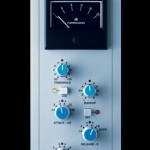The Quest for Glue: Part 2
So in my last post I talked a bit about glue in a mix. Great analog gear can almost naturally impart a bit of this, but the world of digital tends not to. One way to start getting some of that back is through the use of a buss compressor.
Now, I think it’s important to understand that this isn’t the same type of glue we would expect from analog gear. Analog gear can impart a bit of very subtle compression/limiting on the mix buss often referred to as saturation. This mix buss saturation, however, is a different thing from deliberately placing a compressor on a mix.
Analog gear has a softer ceiling than digital. Digital gear handles signals in a completely linear fashion and when we hit full scale, it’s over and our audio becomes distorted. Analog isn’t so linear thanks to the different amplifier stages giving analog a different type of ceiling. If limit of a digital signal is a hard ceiling, analog can be like going up into a cloud. As we push our signals higher with analog gear, harmonic distortion gradually increases. In a great analog desk this can actually be quite nice. As we push into that distortion we don’t hit a hard ceiling. It’s a little more like pushing against a ceiling that gives a little. The result is it gets harder for the louder bits of our mix to get louder, but the quieter things aren’t affected as much. It’s almost like the mix buss is saying, “Wait for the rest of the mix to get up here.” So now the louder things are kept in check a bit while also getting distorted in a subtle and pleasant way which helps with the perception that those louder bits are glued to the rest of the mix. To me, it’s sort of an organic process.
Stand alone compressors, however, are a different animal because compressors are automated attenuators. When we push a signal past a threshold, the compressor deliberately attenuates that signal to keep it from getting louder. On a single input, this behavior can be made similar to our analog compression effects, however, when we place a compressor across our entire mix, there are other implications.
I created and embedded a short video below to demonstrate this. In the video I have 2 signals that each feed one side of a stereo buss with a compressor placed across it. The signal on the left is below our compressor’s threshold and remains at a fixed level. Watch what happens to the fixed signal as the signal on the right is pushed into the compressor and compression kicks in.
Compressor Demo from David Stagl on Vimeo.
This is an extreme example, but it shows what a compressor is actually doing to a signal. Now think about this in terms of compressing a master bus. When we compress an entire mix, the loudest signal in the mix dictates the behavior of the compressor. In an analog saturation situation, our fixed signal would have stayed fixed while it would have been harder for the signal on the right to get louder. I believe this is part of why emulating the organic summing behavior of an analog console is so hard to do because in the analog world the gear doesn’t turn down the entire mix; analog sort of rounds off the top of it. Sure we can add saturation via saturation plugins like one of my favorites, the Cranesong Phoenix, but it’s not exactly the same thing. In the case of the Phoenix, we get one main control which is a wet/dry knob that dictates how much of the saturation effect is added to our original signal. I love it, and it’s great, but it’s not the same thing.
Now, here’s where buss compression can come into play. Since we can’t easily get true analog-style glue with most digital gear yet, employing a buss compressor can help makeup for that by helping to simulate that soft-ceiling we miss with analog. The big difference from that analog ceiling, though, is our entire mix gets turned down instead of just the loud bits that analog would. This isn’t entirely a bad thing, though, but it does make the 2 buss compressor a little harder to work with than the natural ceiling we get in analog.
Next up I’m going to dive into the 2 buss compressor and some strategies for using it.

 Previous Post
Previous Post



A good follow up post would be to talk about how different compressors (Opto, VCA, Electro, Vari-Mu) do compression and effect the sound. And there is a big difference between inserting a compressor on your mix and mixing through a compressor. I rarely have good luck with building a mix, then inserting a compressor, I almost have to mix through the compressor to get it right from the start. Have you tried running the output of your VENUE into an analogue compressor as opposed to digital?
I can’t say I have enough experience with the different types of compressors on the 2 buss to really talk about that. It’s not something I really think about either. I’ll try something and if I like it it stays. Plus most talk from engineers tends to relate to specific models rather than types.
I haven’t tried an analog comp with the VENUE because I don’t have a suitable one available. Plus I wouldn’t want to get hooked on something that wouldn’t be a permanent addition.
Getting analog feel with the convenience of digital would be ideal. I use Waves SSL and PuigChild plugins to help, and it really does work wonders. The harmonic distortion that they emulate sweetens up a mix quite a bit.